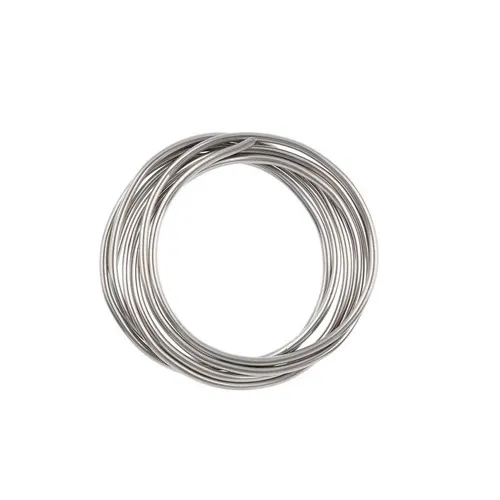-
 Phone:
Phone: -
 Email:
Email:

baling wire direct
Understanding Baling Wire A Direct Approach to Waste Management
In the ever-evolving landscape of waste management and recycling, baling wire plays an indispensable role in ensuring efficiency and sustainability. As industries strive to manage waste responsibly, baling wire emerges as a vital component for various applications, particularly in the compacting and transporting of recyclable materials. This article delves into the significance of baling wire, its types, applications, and tips for selecting the appropriate wire for your specific needs.
What is Baling Wire?
Baling wire is a heavy-duty wire material used to bind compressed bales of various materials, including paper, cardboard, plastics, and metals. The process of baling involves compressing these materials into compact blocks, which can then be transported easily, saved space, and recycled more efficiently. Baling wire ensures that the bales maintain their shape during transportation and storage.
Types of Baling Wire
When it comes to selecting baling wire, understanding the different types available is crucial. The primary types of baling wire include
1. Steel Baling Wire This is the most common type, known for its strength and durability. Steel baling wire can withstand the rigors of heavy loads, making it suitable for industrial applications. It is available in various gauges, allowing users to choose the appropriate thickness based on the materials being baled.
2. Polyester Baling Wire A great alternative to steel, polyester baling wire is lightweight and resistant to rust and corrosion. It is particularly useful in environments where moisture is a concern. Polyester wire is often employed in securing bales of recyclable paper and cardboard, providing a reliable binding solution without the risk of rust stains.
3. Baling Twine This is often used in agricultural settings to bind bales of hay or straw. Baling twine is generally made from polypropylene, which is durable yet flexible, ensuring a secure hold on the bales.
Applications of Baling Wire
Baling wire has a myriad of applications across various industries, including
baling wire direct

- Recycling Centers One of the primary uses of baling wire is in recycling centers where materials such as cardboard, paper, and plastics are collected. Baling wire enables these centers to compress and bundle materials, facilitating easier and more efficient transport to recycling facilities.
- Agriculture Farmers use baling wire to secure hay bales, ensuring they remain intact during storage and transport. Properly tied bales minimize losses due to spoilage and ensure the feed remains accessible for livestock.
- Waste Management Facilities In waste management, baling wire plays a crucial role in condensing waste materials for disposal or further processing.
Choosing the Right Baling Wire
When selecting baling wire for your specific needs, consider the following factors
- Material Compatibility Different materials require different types of baling wire. Ensure that the wire you choose is compatible with the materials you're baling to prevent breakage or damage.
- Gauge and Strength The thickness (gauge) of the wire impacts its strength. Heavier loads will require thicker wire, while lighter materials can be secured with thinner wire.
- Environmental Conditions If you're working in an environment where moisture or humidity is prevalent, opting for polyester baling wire can mitigate the risk of rusting or corrosion.
- Cost-effectiveness While it may be tempting to choose the cheapest option, consider the long-term durability and strength of the wire. Investing in high-quality baling wire can save you time and money in the long run.
Conclusion
Baling wire is a crucial element in effective waste management, recycling, and agricultural operations. Understanding its types, applications, and the factors influencing your selection can significantly enhance efficiency and sustainability. As industries continue to emphasize responsible waste management practices, baling wire will remain at the forefront of these initiatives, playing a key role in creating a cleaner, more sustainable future. Selecting the right baling wire is not just a matter of functionality; it reflects a commitment to efficient waste management and recycling practices that contribute to a healthier planet.
-
Wire Mesh for Every Need: A Practical SolutionNewsJul.25,2025
-
Steel Fences: Durable, Secure, and Stylish OptionsNewsJul.25,2025
-
Roll Top Fencing: A Smart Solution for Safety and SecurityNewsJul.25,2025
-
Cattle Farm Fencing Solutions for Maximum SecurityNewsJul.25,2025
-
Affordable Iron Binding Wire SolutionsNewsJul.25,2025
-
Affordable Galvanized Wire SolutionsNewsJul.25,2025
-
Wire Hanger Recycling IdeasNewsJul.25,2025








